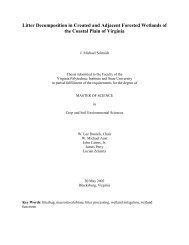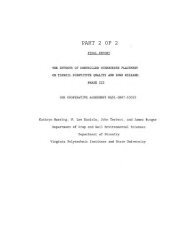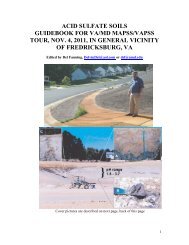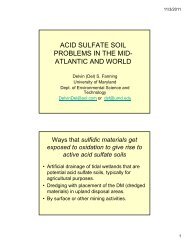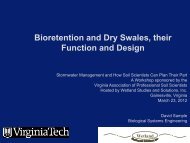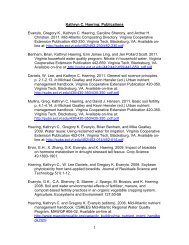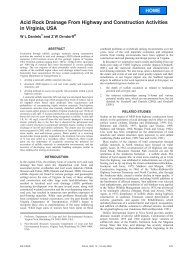Remediation of PAH-Contaminated Soils and Sediments: A ...
Remediation of PAH-Contaminated Soils and Sediments: A ...
Remediation of PAH-Contaminated Soils and Sediments: A ...
You also want an ePaper? Increase the reach of your titles
YUMPU automatically turns print PDFs into web optimized ePapers that Google loves.
Figure 3. Relative <strong>PAH</strong> concentrations with time under the following processes:<br />
transfer (lost fraction), degradation (available fraction) <strong>and</strong> sequestration<br />
(recalcitrant fraction) (Stokes et al., 2006).<br />
<strong>PAH</strong> Transfer<br />
Polycyclic aromatic hydrocarbons are readily transferred among water, air,<br />
terrestrial <strong>and</strong> biological systems. The following processes will be discussed as<br />
<strong>PAH</strong> transfers from soil or sediments to air, water or biological systems.<br />
Volatilization: This is an important transfer process <strong>of</strong> <strong>PAH</strong>s in both soil <strong>and</strong><br />
water resources through diffusion <strong>and</strong> is expressed with Henry’s Law. Henry’s<br />
Law is based on that fact that when two phases are not in equilibrium, a<br />
concentration gradient forms <strong>and</strong> a net flux will occur from one phase to the other<br />
(Eweis et al., 1998).<br />
Henry’s Law:<br />
m = HRT = CG RT<br />
Where, m is Henry’s Law coefficient<br />
H is the dimensionless Henry’s Law coefficient<br />
R is the universal gas constant<br />
T is the temperature in Kelvins<br />
CG is the gas-phase contaminant concentration (g m -3 )<br />
CL is the liquid-phase contaminant concentration (g m -3 )<br />
CL<br />
19



